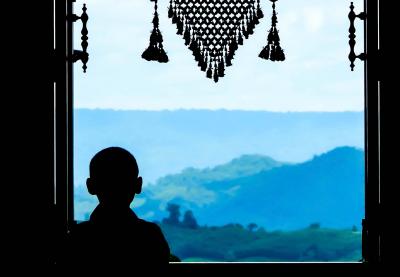I once heard an AP U.S. history teacher tell his class that the only countries that have not accepted democracy are “the parts of the world that are kind of the cesspools of the world, those nations that are just broken nations, destroyed nations.”
I’d been observing his class during my doctoral research, and he was lecturing a group of suburban Massachusetts students on the supposed difficulty of establishing democracy in the Middle East. Without even attempting to differentiate between any of its countries, he included the entire Middle East in this list of “cesspools” and “broken nations.”
With just a few words, this teacher shaped students’ understanding of the region and equated it with violence, deficits and unimaginable differences. In that moment, for his students, the Middle East became home to “the other,” the site of a clash between civilizations—“us” and “them.”
As educators, it's easy to forget the power we hold in our classrooms. Often, students don't see the lenses through which we look—they take our interpretations of the world as objective fact. Consider historical narratives. When we tell stories about the past, we create meaning and establish normative understandings. This is not necessarily an objective process: When certain narratives are privileged in classrooms, others are displaced.
The people of the Middle East are not the only ones represented in demeaning ways. Race, gender, class and geography are all starting points for reducing complex identities into static stereotypes of otherness.
Stereotypes—even positive ones—are often the starting point for presenting an individual or community as “the other.” Dividing regions into “good” and “bad” nations is an obvious play to stereotypes, but even divisions like “East” and “West” are limiting. Using these often-subjective assessments, people can pass judgment, establish hierarchies, exaggerate differences and present cultures and communities as remote and antagonistic toward one another.
However, when teaching about areas that are traditionally presented as “the other” in U.S. schools, teachers have the opportunity to pause and introduce their students to the idea of “otherness.” We can work with students to dismantle demeaning misconceptions and challenge the assumptions that allow stereotypes to be imposed on a people or region.
If you want to do this work in your own classroom, here are a few red flags to look out for, and a few approaches to avoid in your own teaching.
Representing a population as homogenous.
Teachers can and should emphasize the diversity that exists within all communities and certain those often presented as “the other.” For instance, the Middle East is home to a wide range of ethnic, racial, religious and linguistic communities, each with its own plurality of intragroup indentities and forms of expression. There is no one vision of Islam or Arab or Israeli identity, for example. No religious, national or ethnic group is just one thing, and exposing students to resources that allow members of a particular group to define themselves on their own terms can provoke students to look beyond simplifications. Helping students recognize this diversity is a first step toward complicating their consciousness of the region.
Implying a community possesses essential traits.
Teachers can avoid suggesting that individuals or cultures behave a certain way “because
that’s who they are.” Instead, we should emphasize the importance of historical context when explaining the actions of members of certain communities. There are a number of stereotypes about the Middle East: that it is home to terrorists, prone to violence, politically unstable and a threat to “Western” values and ways of life. But the Middle East is not inherently a “bad neighborhood.” A confluence of geopolitical trends and events unfolding over centuries helps to explain the political realities at work in Syria or between Israelis and Palestinians—and even this context is only the beginning of a serious inquiry into the cultural and societal dynamics beyond such conflicts.
Presenting a community as incomprehensibly different.
Differences exist between and within populations, but exaggerating difference can deny shared humanity and can make marginalized groups appear remote and alien. We can help students value difference without using it as a tool in exoticizing, romanticizing or distorting the cultures or experiences of people different from themselves. For example, the Middle East has often been presented by academics, travelers and artists as sensual and irrational, home to the bizarre. But behind these representations is a history of economic trade, intellectual influence and cultural exchange. Studying the reciprocal influences between Europe and the Middle East over the centuries can help students appreciate the ways that ideas and institutions have been shaped because of, not in spite of, these interactions.
Neglecting the history of cultural exchange.
No community avoids external influence entirely. Representing a group as “the other” denies the reality of cultural exchanges between peoples over time. Teachers can push back against this tendency by unpacking the ways groups have interacted and created hybrid identities through the diffusion of ideas and expressions. Recognizing this history in classrooms challenges notions of cultural purity and absolute difference between communities.
Students live in a globally interconnected world. As educators, it’s our job to help them demystify its complexity and diversity. We can avoid representing the diverse communities in the Middle East and elsewhere as “the other.” Reflecting on the ways we represent marginalized communities—in our language and the ideas behind it—we can choose to introduce all the cultures we teach as pluralistic, dynamic and deserving of respect. In doing so, we can ensure the classroom is a place that prizes humanity and cultivates students’ global consciousness.
Daniel Osborn, Ed.D. is an instructor of history at Dean College. He is the author of Representing the Middle East and Africa in Social Studies Education: Teacher Discourse and Otherness.
